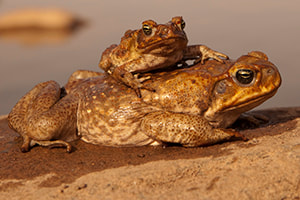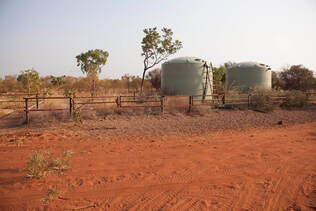Research themes and current projects
Modifying the behaviour of threatened species to improve conservation outcomes
|
|
Reintroductions of endangered species often fail because the reintroduced animals have poor survival. To tackle this problem, our group developed a novel approach: we modified the behaviour of threatened species prior to reintroducing them to the wild. For example, we trained northern quolls not to eat cane toads, and reintroduced these ‘toad smart’ toads to Kakadu, where toad-smart females survived and reproduced. The video on the left shows one of our 'toad smart' quolls ignoring a live cane toad before destroying our Go Pro camera!
We have also used assisted gene flow to introduce toad smart genes to northern quolls. Working with indigenous rangers, Ella Kelly, one our our PhD students, introduced QLD quolls that had genes for ‘toad smart’ behaviour, and NT quolls that she trained not to eat toads, to an island in the Northern Territory. She then followed up with trapping studies to see how the quolls fared on this largely predator free, but toad-infested island. Using genetic analyses, Ella elegantly showed that toad smart quolls survived and reproduced. |
Impacts of the 2019-2020 bushfires on reptiles
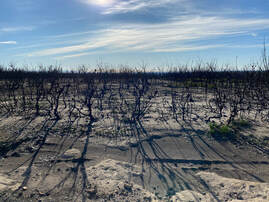
Many people will have read the WWF media reports which claimed that the devastating 2019-2020 wildfires killed billions of animals, and threatened the persistence of populations of endangered species. But are these media reports true? What were the real impacts of the 2019-2020 bushfires on wildlife? Are the assumptions of mass mortality during fires valid? To answer these questions, we are working with Professor Mike Letnic to carry out surveys for threatened reptiles in wildfire ravaged regions. One of our focal species, the endangered broad-headed snake, uses tree hollows during the summer months and is therefore likely to have experienced some fire-induced mortality. However, this species, and some other rare snakes, seem to have fared remarkably well. Watch this space to see what we discover!
Thermal tolerance in ectotherms
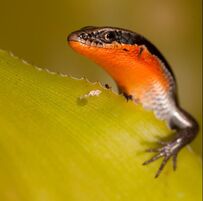
How do lizards cope with high temperatures? What do lizards do when their shelter sites exceed 50 degrees Celsius during prolonged heatwaves? How do heatwaves affect the survival of rock-dwelling lizards? These are some of the questions that we are investigating, using rock dwelling lizards and other ecotherms as our model organisms. We use a combination of lab and field approaches to tackle this question. We measure thermal tolerance and heat hardening in the lab, and we use mark-recapture studies to see how heatwaves affect the survival of individually marked lizards in the wild. Watch this space to see what we discover.
Developmental plasticity in reptiles
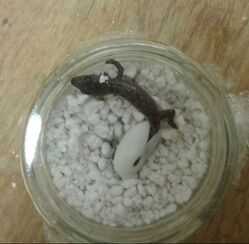
Organismal phenotypes result from interactions between the genotype and the developmental (and maternal) environments. In reptiles, thermal conditions in utero and in the nest can alter the size, shape, and behaviour of the offspring. However, several fundamental questions remain unanswered. For example, does thermal developmental plasticity influence the fitness of offspring after they leave the nest? Do the fluctuations in nest temperatures that occur during heat waves affect offspring fitness? Could future increases in nest temperatures affect offspring traits and fitness, and could such changes affect the persistence of lizard populations? These are some of the questions that our group tackles, using lizards as model organisms. You can read more about this research here.
Impacts and behaviour of invasive species
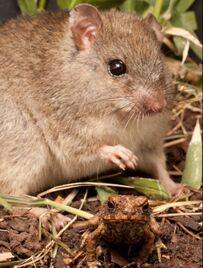
Invasive species are one of the leading causes of biodiversity loss. Our group has documented the impacts of invasive species on ecosystems, and we have developed novel methods to reduce their impacts on native species. For example, we showed that it is possible to eradicate toxic cane toads from millions of square kilometers of the Australian outback. We also used a novel approach to train predators not to eat toxic cane toads.
Invasive species also provide us with a unique opportunity to study the ways that invaders have adapted to novel environments. For example, Yingyod Lapwong has shown that invasive house geckos from New South Wales, Australia, have greater cold tolerance than house geckos from Thailand. This means that we should expect to see Asian house geckos spread further southwards, potentially spreading parasites and pathogens to native lizards that inhabit urban areas. You can read more here.
Invasive species also provide us with a unique opportunity to study the ways that invaders have adapted to novel environments. For example, Yingyod Lapwong has shown that invasive house geckos from New South Wales, Australia, have greater cold tolerance than house geckos from Thailand. This means that we should expect to see Asian house geckos spread further southwards, potentially spreading parasites and pathogens to native lizards that inhabit urban areas. You can read more here.
|
Using physiology and behaviour to halt the spread of invasive species
Invasive species are a major problem across the globe because they disrupt native ecosystems and cost millions each year to control their populations. Cane toads in Australia are just one example of an invasive species that has transformed entire ecosystems. Although the government has spent millions of dollars trying to come up with new methods to control cane toad populations, most of these ‘high tech’ approaches have failed. Whilst radio-tracking cane toads in the semi-arid outback of northern Australia, we discovered that toads have an Achilles heel: during the dry season, toads must soak in water every three days or they perish. To quantify the desiccation rates of toads in the harsh outback, we deployed plaster toads containing thermal dataloggers in all available habitats. We found that the only places toads could survive were in or around artificial water (turkey nest dams) used to provide water to cattle. We fenced off these dams, and eradicated toads from large areas. Using landscape modeling, we showed that if farmers replaced open dams with plastic poly tanks (to provide water to stock - see photo on left), they could prevent cane toads from colonising millions of square kilometres of outback Australia. You can read more about our research here. |
Conserving the broad-headed snake
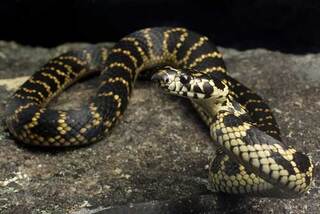
Broad-headed snakes are arguably one of Australia's most beautiful snakes, and unfortunately, humans are largely responsible for their demise. Broad-headed snakes need sandstone rocks for shelter sites, and these rocks are prized by gardeners and landscapers. Rocks are essentially non-renewable - they can take hundreds (or thousands) of years to weather from the parent rock, and if the rocks are removed, the animals that once sheltered underneath them have no where to live. Unfortunately, the key threats to broad-headed snakes are bush rock removal and the illegal poaching of snakes for the underground pet trade.
What can you do to help this snake? Don't buy bush rocks from landscape suppliers or nurseries. Lobby your local council to bring in by-laws to prevent the sale of bush rocks in nurseries. Use alternative products, like quarried sandstone, or sleepers from sustainable forests. If you see someone with a trailer or truck full of bush rocks in a state forest or national park, phone NSW National Parks and Wildlife (1300 072 757) .
What can you do to help this snake? Don't buy bush rocks from landscape suppliers or nurseries. Lobby your local council to bring in by-laws to prevent the sale of bush rocks in nurseries. Use alternative products, like quarried sandstone, or sleepers from sustainable forests. If you see someone with a trailer or truck full of bush rocks in a state forest or national park, phone NSW National Parks and Wildlife (1300 072 757) .
Other research projects
If you want to read more about the research our group does, then please visit our News and Publications pages.
|
|
